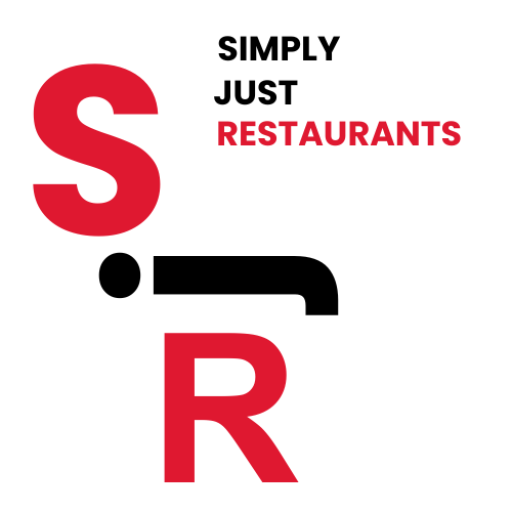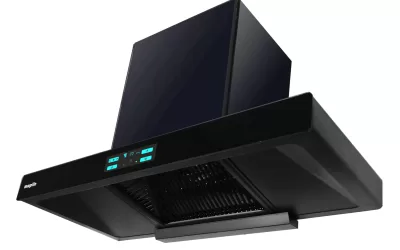Introduction To The Combi Oven
A combi oven, combining convection, steam, and combination cooking, is a versatile and essential piece of equipment in modern commercial kitchens. It can perform various cooking methods, including baking, roasting, steaming, and more, making it a valuable asset for any food service operation. This guide provides detailed instructions on operating a combi oven, covering setup, daily use, maintenance, and troubleshooting.

1. Initial Setup For Combi Oven
a. Unpacking and Inspection
- Unpack the Oven:
- Carefully remove the oven from its packaging.
- Inspect it for any damage that might have occurred during shipping.
- Remove any protective films or packaging materials from the exterior and interior of the unit.
- Check Components:
- Ensure all included components, such as racks, trays, and accessories, are present and undamaged.
- Refer to the user manual for a complete list of included items.
b. Placement and Positioning
- Choose the Location:
- Select a well-ventilated area with sufficient space for the oven.
- Ensure there is adequate clearance around the oven for proper air circulation and access for maintenance.
- Level the Oven:
- Use a spirit level to ensure the oven is level.
- Adjust the leveling feet or casters as necessary to achieve a stable, level position.
c. Electrical and Water Connection
- Power Requirements:
- Verify that the power outlet matches the voltage and amperage requirements specified in the user manual.
- Ensure the outlet is properly grounded to prevent electrical hazards.
- Water Supply:
- Connect the oven to a suitable water supply for steam cooking.
- Use a water filter to prevent scale buildup and ensure water quality.
- Drainage:
- Ensure proper drainage for the oven’s condensate and wastewater.
- Check the manufacturer’s guidelines for drainage installation.
d. Initial Calibration and Testing
- Initial Power On:
- Turn on the oven and check that it powers up correctly.
- Follow the manufacturer’s instructions for initial calibration and setup.
- Test Functions:
- Test the different cooking functions (convection, steam, and combination) to ensure they are working properly.
- Check for any error messages or malfunctions.

2. Daily Operation OF Combi Oven
a. Basic Controls and Settings
- Control Panel Overview:
- Familiarize yourself with the control panel layout, including buttons, dials, and display screens.
- Refer to the user manual for detailed descriptions of each control.
- Setting the Temperature:
- Select the desired cooking mode (convection, steam, or combination).
- Set the temperature using the temperature control knob or digital input.
- Setting the Time:
- Set the cooking time using the timer control.
- Some models may offer programmable cooking cycles for specific recipes.
- Steam Injection:
- For steam or combination cooking, adjust the steam level as needed.
- Some ovens allow manual steam injection during the cooking process.
b. Cooking Methods
- Convection Cooking:
- Use the convection mode for baking, roasting, and grilling.
- Preheat the oven to the desired temperature before placing food inside.
- Use appropriate racks and trays for different types of food.
- Steam Cooking:
- Use the steam mode for steaming vegetables, fish, and other delicate items.
- Set the temperature and steam level according to the recipe.
- Monitor the cooking process to ensure even steaming.
- Combination Cooking:
- Use the combination mode to combine convection and steam for versatile cooking.
- Ideal for baking bread, roasting meats, and other applications requiring moisture and heat.
- Adjust temperature, time, and steam levels to achieve desired results.
c. Loading and Unloading
- Loading the Oven:
- Arrange food on trays or racks, ensuring even spacing for proper air circulation.
- Avoid overloading the oven, which can affect cooking performance.
- Unloading the Oven:
- Use oven mitts or heat-resistant gloves to handle hot trays and racks.
- Carefully remove food items to avoid spills and burns.
d. Monitoring and Adjusting
- Monitoring the Cooking Process:
- Check the oven periodically to monitor cooking progress.
- Use the oven’s internal light and viewing window to observe food without opening the door.
- Adjusting Settings:
- Adjust temperature, time, and steam levels as needed during cooking.
- Some ovens allow mid-cycle changes to adapt to specific cooking requirements.
- Familiarize yourself with the control panel layout, including buttons, dials, and display screens.
- Refer to the user manual for detailed descriptions of each control.
- Select the desired cooking mode (convection, steam, or combination).
- Set the temperature using the temperature control knob or digital input.
- Set the cooking time using the timer control.
- Some models may offer programmable cooking cycles for specific recipes.
- For steam or combination cooking, adjust the steam level as needed.
- Some ovens allow manual steam injection during the cooking process.
- Use the convection mode for baking, roasting, and grilling.
- Preheat the oven to the desired temperature before placing food inside.
- Use appropriate racks and trays for different types of food.
- Use the steam mode for steaming vegetables, fish, and other delicate items.
- Set the temperature and steam level according to the recipe.
- Monitor the cooking process to ensure even steaming.
- Use the combination mode to combine convection and steam for versatile cooking.
- Ideal for baking bread, roasting meats, and other applications requiring moisture and heat.
- Adjust temperature, time, and steam levels to achieve desired results.
- Arrange food on trays or racks, ensuring even spacing for proper air circulation.
- Avoid overloading the oven, which can affect cooking performance.
- Use oven mitts or heat-resistant gloves to handle hot trays and racks.
- Carefully remove food items to avoid spills and burns.
- Check the oven periodically to monitor cooking progress.
- Use the oven’s internal light and viewing window to observe food without opening the door.
- Adjust temperature, time, and steam levels as needed during cooking.
- Some ovens allow mid-cycle changes to adapt to specific cooking requirements.

3. Cleaning and Maintenance
a. Daily Cleaning
- Surface Cleaning:
- Wipe down the exterior surfaces with a damp cloth and mild detergent.
- Clean the control panel, door handles, and other frequently touched areas.
- Interior Cleaning:
- Remove any food debris or spills from the interior after each use.
- Use a non-abrasive cleaner to clean the oven cavity and racks.
- Steam Cleaning Function:
- Many combi ovens have a steam cleaning function. Follow the manufacturer’s instructions for using this feature.
- Run the steam cleaning cycle to loosen and remove grease and food residue.
b. Weekly and Monthly Maintenance
- Deep Cleaning:
- Perform a thorough cleaning of the oven interior, including the door seals and glass.
- Remove and clean the racks, trays, and any detachable components.
- Descaling:
- Regularly descale the steam generator to prevent mineral buildup.
- Use a manufacturer-approved descaling solution and follow the recommended procedure.
- Inspecting Components:
- Check door seals, hinges, and other components for wear and damage.
- Replace any worn or damaged parts to ensure proper operation.
c. Annual Maintenance
- Professional Servicing:
- Schedule an annual inspection and maintenance by a qualified technician.
- This should include checking the electrical system, water supply, and overall functionality.
- Updating Software:
- Some combi ovens may have firmware or software updates. Check with the manufacturer for any available updates.
- Follow instructions for updating the oven’s software to ensure optimal performance.
- Wipe down the exterior surfaces with a damp cloth and mild detergent.
- Clean the control panel, door handles, and other frequently touched areas.
- Remove any food debris or spills from the interior after each use.
- Use a non-abrasive cleaner to clean the oven cavity and racks.
- Many combi ovens have a steam cleaning function. Follow the manufacturer’s instructions for using this feature.
- Run the steam cleaning cycle to loosen and remove grease and food residue.
- Perform a thorough cleaning of the oven interior, including the door seals and glass.
- Remove and clean the racks, trays, and any detachable components.
- Regularly descale the steam generator to prevent mineral buildup.
- Use a manufacturer-approved descaling solution and follow the recommended procedure.
- Check door seals, hinges, and other components for wear and damage.
- Replace any worn or damaged parts to ensure proper operation.
- Schedule an annual inspection and maintenance by a qualified technician.
- This should include checking the electrical system, water supply, and overall functionality.
- Some combi ovens may have firmware or software updates. Check with the manufacturer for any available updates.
- Follow instructions for updating the oven’s software to ensure optimal performance.

4. Troubleshooting Common Issues For Combi Oven
a. Temperature Issues
- Oven Not Heating Properly:
- Check the thermostat settings and ensure they are correct.
- Verify that the door is closing properly and sealing tightly.
- Uneven Heating:
- Ensure the oven is level and properly installed.
- Check for any blockages in the air vents or fan.
b. Steam Issues
- Insufficient Steam Production:
- Check the water supply and ensure it is connected and turned on.
- Inspect the steam generator for scale buildup and descale if necessary.
- Excessive Steam:
- Adjust the steam settings to reduce steam levels.
- Ensure proper ventilation and drainage for the oven.
c. Electrical Issues
- Oven Not Powering On:
- Check the power cord and plug for any damage.
- Ensure the outlet is functioning correctly by testing with another appliance.
- Error Messages:
- Refer to the user manual for explanations of error codes and troubleshooting steps.
- Reset the oven if necessary and contact technical support for unresolved issues.
- Check the thermostat settings and ensure they are correct.
- Verify that the door is closing properly and sealing tightly.
- Ensure the oven is level and properly installed.
- Check for any blockages in the air vents or fan.
- Check the water supply and ensure it is connected and turned on.
- Inspect the steam generator for scale buildup and descale if necessary.
- Adjust the steam settings to reduce steam levels.
- Ensure proper ventilation and drainage for the oven.
- Check the power cord and plug for any damage.
- Ensure the outlet is functioning correctly by testing with another appliance.
- Refer to the user manual for explanations of error codes and troubleshooting steps.
- Reset the oven if necessary and contact technical support for unresolved issues.

5. Enhancing Efficiency and Longevity
a. Energy-Saving Tips
- Optimal Loading:
- Avoid overloading the oven to maintain proper airflow and efficiency.
- Organize items to minimize the time the door is open.
- Temperature Settings:
- Use the appropriate temperature settings for different cooking methods.
- Regularly monitor and adjust settings to prevent overuse of energy.
b. Proper Use and Training
- Staff Training:
- Train staff on the proper use and maintenance of the combi oven.
- Emphasize the importance of minimizing door openings and proper loading techniques.
- Regular Inspections:
- Conduct regular inspections of the oven to identify and address any issues promptly.
- Keep a maintenance log to track cleaning, inspections, and any repairs.
c. Upgrades and Replacements
- Upgrading Components:
- Consider upgrading to energy-efficient components, such as LED lighting and high-efficiency fans.
- Evaluate the benefits of smart technology for remote monitoring and diagnostics.
- Replacing the Oven:
- If the oven is frequently breaking down or inefficient, consider replacing it with a newer, more energy-efficient model.
- Compare the costs of repairs and energy consumption with the investment in a new unit.
- Avoid overloading the oven to maintain proper airflow and efficiency.
- Organize items to minimize the time the door is open.
- Use the appropriate temperature settings for different cooking methods.
- Regularly monitor and adjust settings to prevent overuse of energy.
- Train staff on the proper use and maintenance of the combi oven.
- Emphasize the importance of minimizing door openings and proper loading techniques.
- Conduct regular inspections of the oven to identify and address any issues promptly.
- Keep a maintenance log to track cleaning, inspections, and any repairs.
- Consider upgrading to energy-efficient components, such as LED lighting and high-efficiency fans.
- Evaluate the benefits of smart technology for remote monitoring and diagnostics.
- If the oven is frequently breaking down or inefficient, consider replacing it with a newer, more energy-efficient model.
- Compare the costs of repairs and energy consumption with the investment in a new unit.

Conclusion
Operating a combi oven involves understanding its various functions, maintaining it properly, and troubleshooting common issues. By following this comprehensive guide, you can maximize the performance and lifespan of your combi oven, ensuring it remains a valuable asset in your commercial kitchen. Regular maintenance, proper training, and smart usage practices will help you get the most out of your combi oven, contributing to the success of your food service operation.
About Author sudeshna mukherjee
You May Also Like…
2024 Buyer’s Guide: How to Choose the Best Auto Clean Chimney for Your Kitchen
IntroductionA chimney is essential for a clean and safe kitchen. Kitchen chimneys are essential for aesthetics and...
How to Choose the Right POS Software for Your Restaurant in India
Introduction Profits are what make it all worthwhile. Running a successful restaurant requires an efficient...



